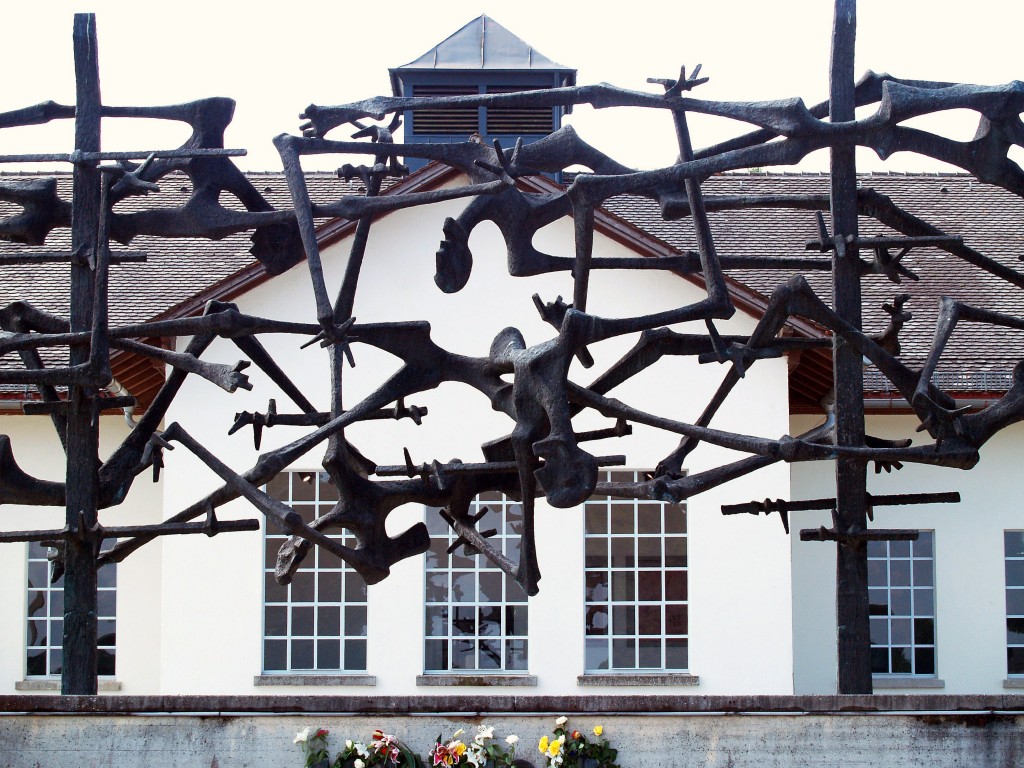When I was in high school, I was fascinated with World War II. I took a class on World War II and I guess my fascination continued into college because I majored in history and I took another course on World War II. I watched all 26 episodes of the World at War series (1973–74) on PBS several times.
The thing I remember most clearly was the face at the end of the closing credits. The face was gaunt and mostly shadow. Deep dark shadows filled the hollows of the eyes and cheeks—especially the eyes. It was a haunting face, especially with the music and the flames which accompanied it. I never turned off the TV until I saw it. I think it was the face of a person from a concentration camp.
The other thing I remember about that show was the episode called “Genocide.” This episode ends with the implementation of the “Final Solution.” It was the first time I saw the bulldozers. You know, the ones that were pushing heaps of emaciated bodies… The episode ended with the music and the flames and the face.
Baffled by the Holocaust
I’m not sure exactly what the attraction to World War II was all about. Part of the draw could have been something like a fourth grader being interested in dinosaurs. But I think a lot of it stemmed from puzzlement. I watched the shows and read the books to try to find something to help me make sense of it all. Episode 20, “Genocide,” only increased my confusion and fascination.
I now think that this confusion was rooted in the gap that existed in my own mind between the idea of the Holocaust and the physical reality of the Holocaust. Knowing and thinking are not the same thing. I had ideas about the Holocaust, but I didn’t know about it.
The Anne Frank Museum didn’t bridge the gap. Maybe that’s the museum’s fault; it works so hard to create a universal significance that the particularity of young girl is lost. Perhaps it’s my problem because I universalize everything.
From Thinking to Knowing
Then I went to Dachau. Dachau bridged the gap. It was the prototype on which all the other camps were based. Intending to spend a couple of hours; my wife and I stayed for more than six.
It was at Dachau that I realized that concentrations camps weren’t built out of ideas like racism, anti-Semitism, National Socialism, evil, hate or the scapegoat mechanism.
Dachau was built out of concrete, barbed wire, and wood.
I know that doesn’t sound like much of a revelation, but it is! Before that visit, the Holocaust was an abstract concept; that day it became concrete. The men who ran the place were made of flesh and blood and their boots wore out the tile in the interior hallways. The prisoners were defined by an iron gate that I strolled through. I stood where they stood for roll call on freezing winter mornings in thin, striped, tattered uniforms.
[click_to_tweet tweet=”The ovens at Dachau were not just an atrocity; they were also brick and mortar. ” quote=”The ovens at Dachau were not just an atrocity; they were also brick and mortar. “]
When the idea of the Holocaust is linked with the physicality of Dachau, it becomes real in a profound way.

